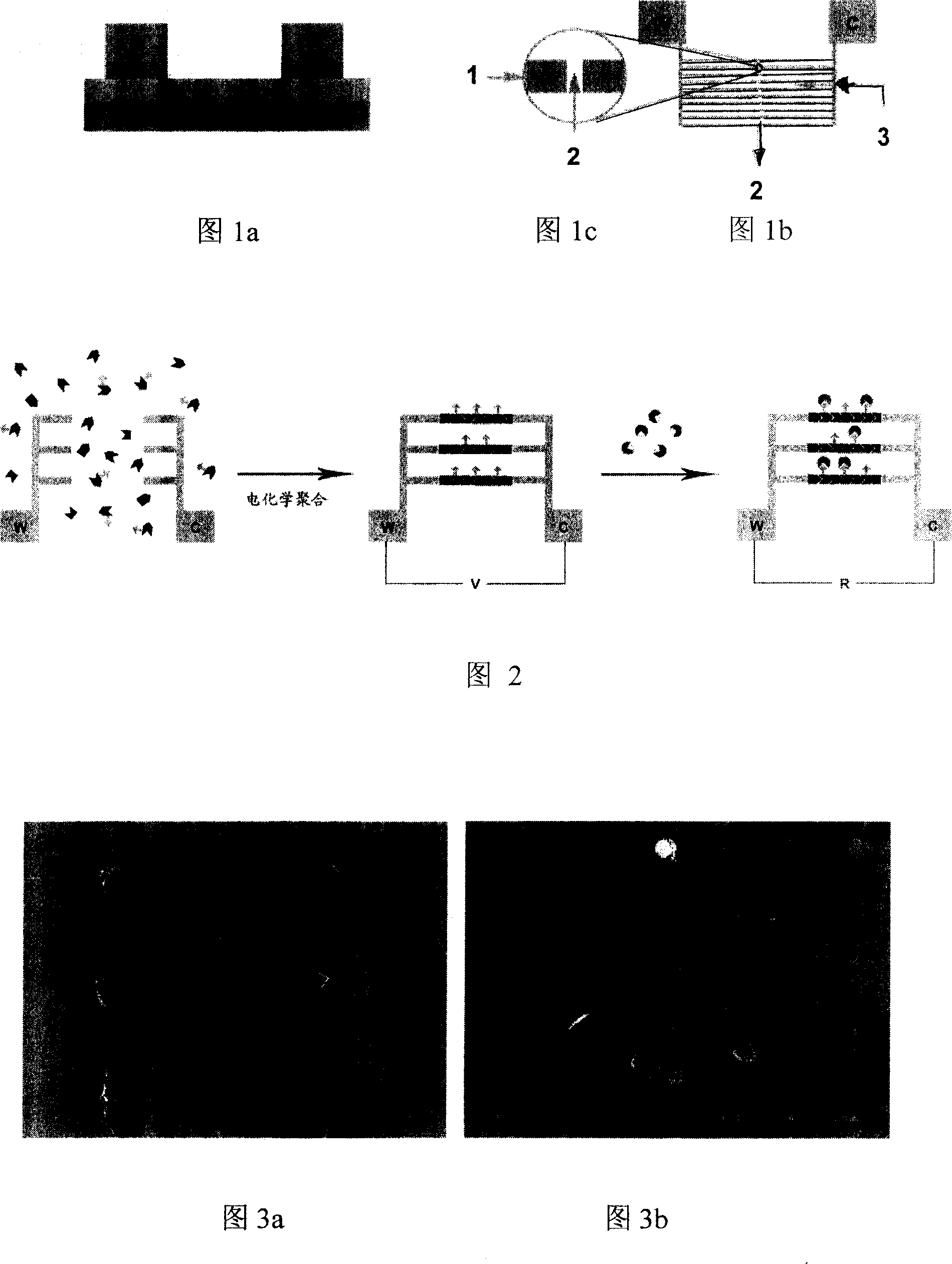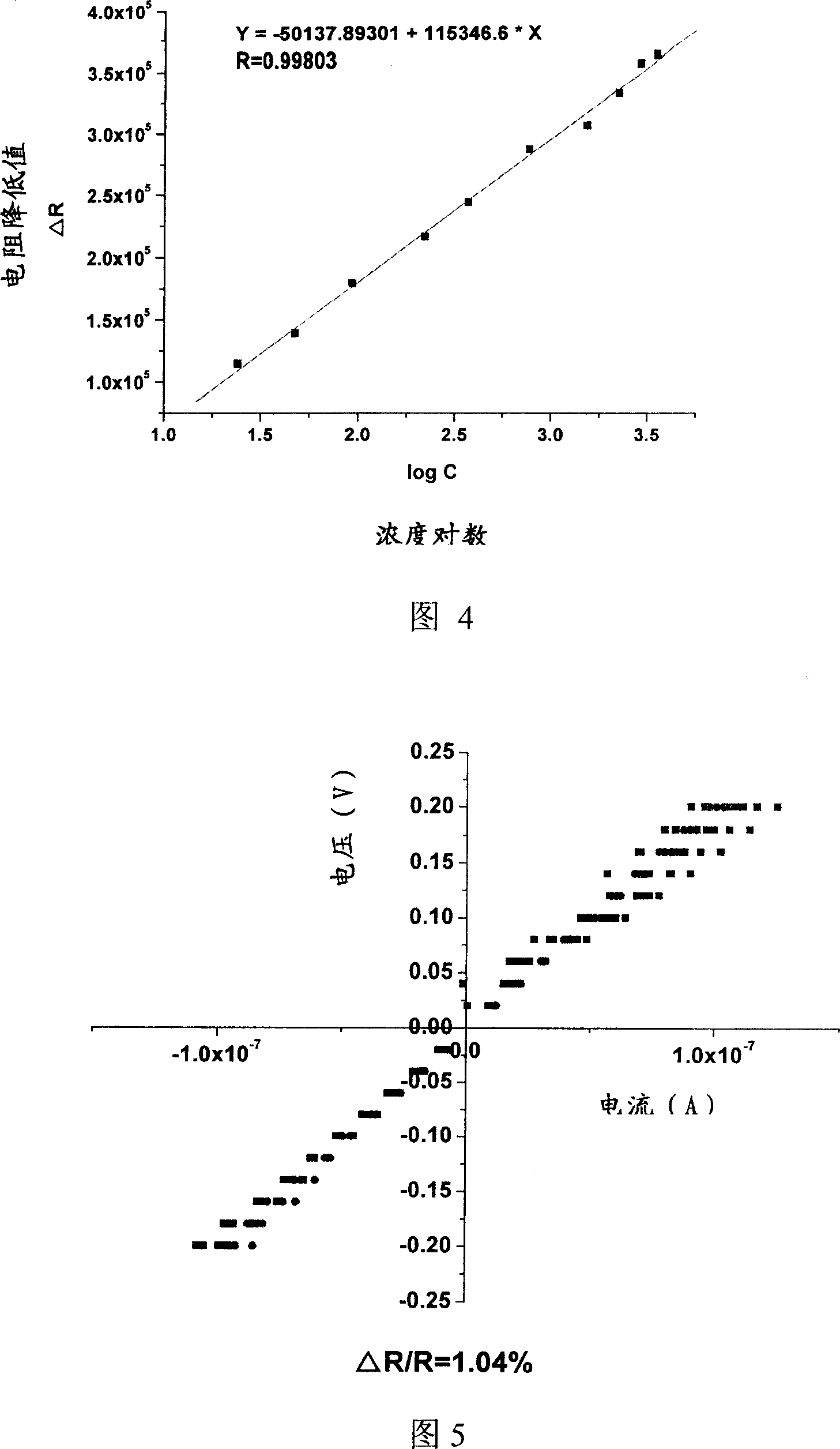Biosensor based on aptamer modified conducting polymer and its preparation method and uses
A technology of biosensors and conductive polymers, applied in biochemical equipment and methods, measurement/testing of microorganisms, instruments, etc., can solve problems such as complex technology, limited sensitivity, unfavorable sensing elements, etc., and achieve strong specificity and affinity , a wide range of applications, easy to synthesize the effect
- Summary
- Abstract
- Description
- Claims
- Application Information
AI Technical Summary
Problems solved by technology
Method used
Image
Examples
Embodiment 1
[0054] 1. Fabrication of Microelectrode Arrays
[0055] Thermal oxidation is performed on the surface of the Si wafer to obtain SiO 2 Oxide layer, the thickness is controlled at 500 nanometers. Vapor-deposit 5 nanometers thick Ti on the surface of the thermal oxide layer of the above-mentioned Si wafer, and then perform photoetching to obtain a microelectrode of the expected shape consisting of a working electrode and a counter electrode, wherein the working electrode and the counter electrode are respectively composed of 10 electrode wires , the width 1 of the electrode wires of the working electrode and the counter electrode is 10 microns, the spacing 2 between the electrode wires forming the working electrode or the counter electrode is 2 microns, and the row spacing 3 between each electrode wire is 100 microns; In the electron beam deposition system, Pt is deposited on the surface of Ti, and the thickness is controlled at 30 nanometers to obtain a microelectrode array tha...
Embodiment 2
[0066] (1) Two microelectrodes A and B are connected in parallel, first apply the method described in Example 1 between the A microelectrodes to prepare a biosensor with thrombin nucleic acid aptamer modification, the only difference between the experimental conditions and Example 1 is When preparing the electrolyte solution in the first step, add 25 μl of the pyrrole solution with a concentration of 5.0 mmol / L to which the thrombin nucleic acid aptamer is linked instead of 50 μl (the molar ratio of the conductive polymer monomer to the conductive polymer monomer linked to the nucleic acid aptamer is 800:1); then adopt the same three-step polymerization method between microelectrodes B, just replace the pyrrole monomer modified by the thrombin nucleic acid aptamer with the pyrrole monomer modified by the IgE (immunoglobulin E) nucleic acid aptamer body, biosensors with IgE nucleic acid aptamer modification can be obtained. A simple biosensor array capable of recognizing two bi...
PUM
| Property | Measurement | Unit |
|---|---|---|
| width | aaaaa | aaaaa |
| thickness | aaaaa | aaaaa |
| width | aaaaa | aaaaa |
Abstract
Description
Claims
Application Information
 Login to View More
Login to View More - R&D
- Intellectual Property
- Life Sciences
- Materials
- Tech Scout
- Unparalleled Data Quality
- Higher Quality Content
- 60% Fewer Hallucinations
Browse by: Latest US Patents, China's latest patents, Technical Efficacy Thesaurus, Application Domain, Technology Topic, Popular Technical Reports.
© 2025 PatSnap. All rights reserved.Legal|Privacy policy|Modern Slavery Act Transparency Statement|Sitemap|About US| Contact US: help@patsnap.com



